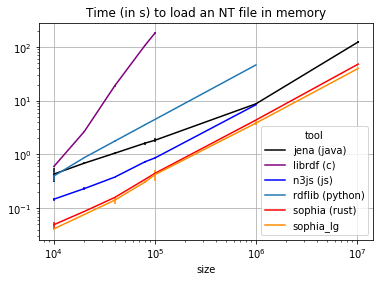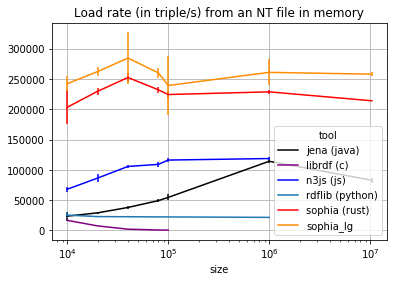Sophia
A Linked Data and Semantic Web toolkit for Rust
Pierre-Antoine Champin (Univ. de Lyon – UCBL – LIRIS)
Developers Track – The Web Conf 2020
- Why Rust?
- Why Sophia?
- Present and Future
Why Rust?
Rust
is a system programming language
(fine-grained control)
with high-level abstractions.
(genericity, polymorphism...)

“Rust emphasizes performance”
- statically typed compiled language
- zero-cost abstractions
“Rust emphasizes reliability”
i.e. memory-safe, thread-safe
Handled by Rust at compile time
- Relatively young, yet mature (1.0 released in May 2015)
- “Most beloved language” by Stack Overflow users 4 years in a row
- Dynamic and welcoming community
Why Sophia?
- Teaching myself Rust
- An RDF implementation in Rust
- A unified API for RDF in Rust (alla RDF-JS)
Zero-cost abstraction for RDF
- in memory / on disk
- speed / space
- query / update
- thread-safe?
- Encouraging feedback...
- ... and contributions (@MarcAntoine-Arnaud, @althonos, @Tpt, @MattesWhite )
Present and Future
Uniform traits (~interfaces)
- Term*
- Triple / Quad
- Graph / Dataset
- Triple- / Quad-Stream
with default implementations
* currently a concrete type, but may become a trait soon
Graph & Dataset
- Multiple in-memory implementations
- with various trade-offs
- One persistent implementation
- based on Oxigraph by Thomas Tanon (@Tpt)
Syntaxes
| Parse | Serialize | |
|---|---|---|
| RDF/XML | ✔ | |
| N-Triples | ✔ | ✔ |
| N-Quads | ✔ | ✔ |
| Turtle | ✔ | 🚧 |
| TriG | ✔ | |
| JSON-LD | 🚧 | ✔* |
* expanded form only, v0.5.0
Performances

What about the rest of the stack?
- SPARQL
- Not yet (except for Oxigraph)
- RDFS/OWL
- Thomas Bourg is working on a rule-based inference engine (based on Inferray)
- N3
- Matthias Farnbauer-Schmidt is working on Metis
Web Assembly
- Julian Bruyat is porting Sophia to Web Assembly
- The goal is to comply with RDF-JS
[Your contribution here]
- Sophia is open-source
- https://github.com/pchampin/sophia_rs
Thank you for your attention
Any question?
Appendix
let mut graph: FastGraph =
parser::turtle::parse_str(some_ttl).collect_triples();
let ex = Namespace::new("http://example.org/")?;
let foaf = Namespace::new("http://xmlns.com/foaf/0.1/")?;
graph.insert(
&ex.get("bob")?,
&foaf.get("knows")?,
&ex.get("alice")?,
)?;
let mut nts = NtSerializer::new_stringifier();
let example2 = nts.serialize_graph(&mut graph)?.as_str();
println!("The resulting graph\n{}", example2);
Sophia's generalized RDF model:
- IRIs can be relative
- Literals can be subjects*
- Variables
* actually any term can occupy any role



